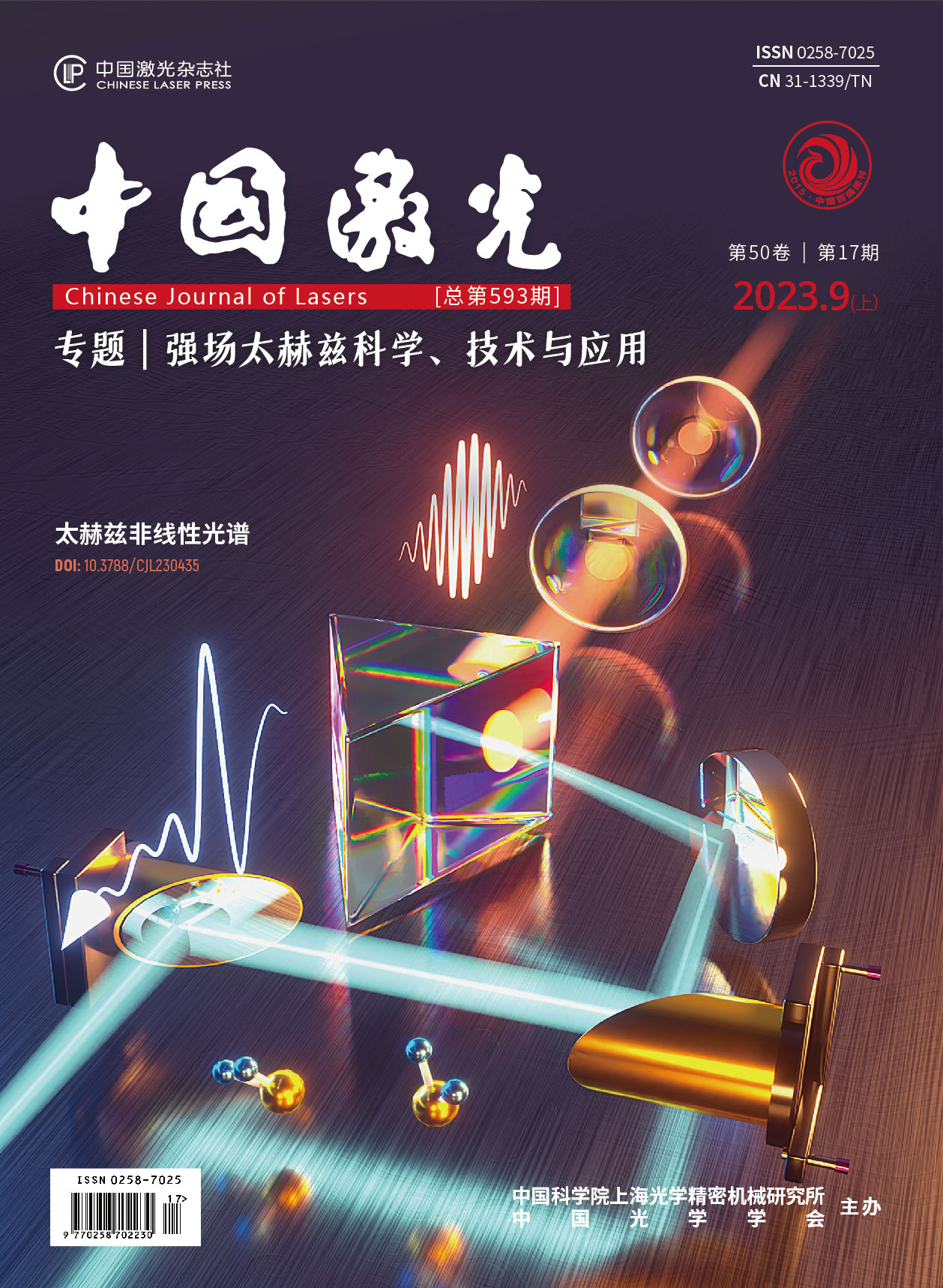超快强激光泵浦强太赫兹源及其驱动的材料非平衡态研究进展  下载: 821次【增强内容出版】
下载: 821次【增强内容出版】
Terahertz (THz) radiation located between the optical and microwave frequency region is known as the “THz gap” (0.1‒10 THz). THz radiation has many unique characteristics, such as low photon energy, transmission of organic materials, and high spectral resolution. These unique properties confirm that THz radiation has significant application value in multiple fields such as information communication, biomedicine nondestructive testing, and scientific research. Traditional THz application is primarily confined to the weak field passive detection linear region, while the transient strong field THz can be used to actively regulate the state of matter. The high-field THz radiation source has strong application demand in nonlinear optics, quantum and condensed matter physics, and many other fields. On one hand, as a unique means of manipulation, strong field THz waves can be used for the coherent regulation of materials, such as that of the electrical and phonon states and phase transition induction. Meanwhile, it can also be utilized as a special diagnostic means for transient spectroscopy diagnosis and single imaging. The pump-probe technique corresponding to the strong field THz wave can be used to characterize ultrafast dynamic processes of energetic materials or plasmas under extreme conditions.
An ultrafast laser provides a stable reliable excitation source for THz generation and detection. THz waves can be generated using ultrafast laser pumping and various excitation media, such as photoconductive antennas, nonlinear crystals, metallic copper foil, air, and liquid water. With continuously increasing THz field strength, matter manipulation using high field THz and nonlinear spectroscopy in the THz region has been recently promoted. Furthermore, it has been demonstrated that THz absorption spectroscopy could assist in revealing excited state dynamics, and that THz emission spectroscopy could also be used to distinguish the strong coupling of carriers, excitons, phonons, and other elementary excitations.
In this study, THz sources based on an ultrafast laser are reviewed. Ultrafast laser-driven photoconductive antennas are a traditional THz source widely used for THz time-domain spectroscopy (TDS) (Fig. 1). Recently, Darrow et al. from Columbia University, demonstrated that large aperture antenna (LAPCA) produces a much higher THz field than a traditional photoconductive antenna. You et al. from Columbia University and Ropagnol et al. from the University of Quebec used different semiconductor materials as the LAPCA substrate, both of which produce high-filed THz radiation. Ultrafast laser-driven optical rectification (OR) (Fig.2) and difference frequency generation (DFG) in nonlinear crystals are important methods for high-field THz generation. Hebling et al. from the University of P
The THz wave is a novel and powerful tool for investigating the fundamental physics process of vibration rotation, spin precession, and electron acceleration (Fig.9). The application of strong-field THz waves in matter manipulation is concluded. Furthermore, the application of time-resolved THz spectroscopy is introduced (Fig.10). Topological insulators and semiconductors pumped by the ultrafast laser may emit THz radiation which indicates the electron dynamics in materials. Broadband THz waves of different polarization directions radiate from a topological insulator surface induced by femtosecond laser pulses (Fig.11). In WSe2/Si heterojunction, THz radiation is enhanced by drift current amplification (Fig.12). A THz wave is generated by the laser-induced polaron in FAPbI3 (Fig.13). Therefore, THz radiation can be used for both manipulation and detection of material dynamics.
Recent process regarding THz generation based on an ultrafast laser is reviewed, including the working principle and existing problems. THz radiation applications in physical state regulation are summarized. THz radiation has broad application prospects in the characterization and control of matter properties.
王康, 方依霏, 程曦, 张泽宇, 宋立伟, 杜鹃, 田野, 冷雨欣. 超快强激光泵浦强太赫兹源及其驱动的材料非平衡态研究进展[J]. 中国激光, 2023, 50(17): 1714005. Kang Wang, Yifei Fang, Xi Cheng, Zeyu Zhang, Liwei Song, Juan Du, Ye Tian, Yuxin Leng. Research Progress on Ultrafast Intense Laser Based High‑Field Terahertz Generation and Application on Non‑Equilibrium State Materials[J]. Chinese Journal of Lasers, 2023, 50(17): 1714005.







